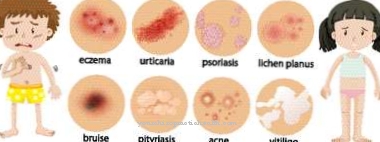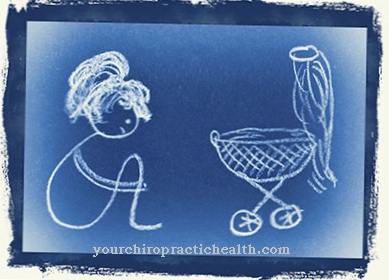The Coxa saltans is a disease from the field of orthopedics. It usually occurs after overloading the thigh area. The disease occurs predominantly in middle-aged people.
What is coxa saltans?

© bilderzwerg - stock.adobe.com
The Coxa saltans is also called snapping hip designated. This disease is considered to be a rather rare occurrence. It is mostly diagnosed in middle-aged people. Researchers and scientists assign people between the ages of 35-65 years to this phase of life.
Coxa saltans is a disease that is classified in medicine in the orthopedic field. It affects problems with the bones of the thighs. The disease can be bilateral or unilateral. There is pain in the region of the thigh, which can lead to the loss of legs. Bone cracking is observed in the patients, especially when walking.
In addition, the bones cause discomfort when stretching in the hip area. Bones cracking is perceived as particularly painful by the patient. The causes of Coxa saltans are injuries in the hip area. In addition, the symptoms can occur when the extremities are overused.
causes
Research has not yet been able to fully elucidate the causes of Coxa Saltans. Many patients have been found to complain of hip pain after injuries such as accidents or falls. In other patients it was found that the cause can be traced back to overuse of the entire hip region.
This can occur when carrying heavy loads or hyperactivity associated with a body misalignment. If body movements take place in such a way that they place additional stress on one half of the body, this can cause pain. The wrong footwear can also mean that the hips have to carry more weight than under normal conditions.
If this takes place permanently, the pain occurs. However, the cause of the coxa saltans cannot be adequately clarified in many patients. There can be various reasons for this. The self-assessment of the patient's physical capabilities can be inadequate or incorrect.
Possible injuries may not have been detected. This includes that they could not be perceived at all or were overshadowed by other diseases. The symptoms could be assigned to other diseases and later no longer be sufficiently differentiated.
You can find your medication here
➔ Medicines for painSymptoms, ailments & signs
The symptoms include pain in the bones in the hip area. Especially when walking, the bones jump. This affects the iliotibial band and the greater trochanter. The iliotibial band is a strand of fibers that runs along the thighs.
The greater trochantor is located between the body of the thigh and the neck. Both jump over each other when the patient moves the hips or legs. This crack in the bones is felt to be painful and uncomfortable. The jump can also be triggered by stretching or twisting the hip and a thigh.
In addition, bending movements can cause pain in the patient. Affected patients no longer feel able to perform everyday movements painlessly. The bones skip jerkily. The trochanter jumps audibly over the tract.
diagnosis
The diagnosis is made through visual contact. The crack in the bones can be heard and felt. Therefore it is possible for a medical professional to diagnose a coxa saltans after excluding other diseases.
If the hip is stressed too much, the symptoms will worsen and the pain will increase. However, if relief occurs at the first signs, spontaneous healing can also occur.
When should you go to the doctor?
A doctor's visit is necessary as soon as all kinds of hip problems occur. If movements of the bones trigger noises, a medical examination should be initiated. Shifts in the hip bones must be clarified so that no permanent damage occurs. Even if the bone changes do not cause pain, a doctor should be consulted.
If there are problems with locomotion or normal movement sequences, this is considered unusual and should be treated medically. If pain sets in, if the movements can no longer be carried out without interruption or if the position of the bones changes permanently, a doctor should be consulted. In order to avoid permanent damage to the skeletal system, medical examinations are necessary. If the usual performance limit falls and there is an impairment in everyday life, it is advisable that the complaints are discussed with a doctor.
A restriction in lifestyle and leisure activities leads to a reduced quality of life, which should be pursued. If symptoms spread, if the lack of exercise leads to obesity or emotional stress, a doctor is required. If the symptoms are so severe that they lead to a reduction in work, a doctor must be consulted so as not to take unnecessary risks. A doctor's visit is also necessary if the symptoms only occur sporadically or in connection with certain activities.
Doctors & therapists in your area
Treatment & Therapy
For the treatment of coxa saltans, doctors recommend physiotherapy. In this, the patient learns how to perform optimal body movements. They are designed to relieve the hip area as much as possible and to avoid tilting the body. This means that processes like getting in and sitting down in a vehicle are trained as well as general forward movement by running or walking.
Since pain can arise when climbing stairs as well as when sitting down and getting up, these everyday processes are trained. The aim of physiotherapy is to strengthen the muscles and at the same time to analyze corrections in the sequence of movements. With little hints and tips, an improvement can often be achieved for the patient in everyday life.
In some cases, medication may be given. These are mostly pain-relieving anesthetics. If the symptoms persist or worsen, it should be checked whether a surgical procedure should be performed. Here the muscle fibers are stabilized by doubling or the greater trochanter is fixed. Both are intended to prevent the iliotibial tract from jumping over the greater trochanter.
Outlook & forecast
The prognosis of the coxa saltans depends on the severity of the disease. A conservative treatment method is used for minor impairments. The pain should be relieved by giving medicines or participating in physiotherapy. With the right movement sequences and relief of the body, there can be a significant improvement in the state of health.
The cooperation of the patient is important. Avoid being overweight, as well as engaging in intense sports or overstraining the skeletal system. In physiotherapy, the patient learns in various training courses how to move optimally in everyday life, which shoes to wear and how to face challenges.
In most cases there is no cure. Nevertheless, the symptoms can be alleviated and the progression of the disease halted.Surgical intervention is necessary if the coxa saltans are more pronounced. This is associated with the usual risks and side effects.
There is an increased risk of infection and injury to the tendons or nerves. Subsequently, patients report a reduction in their strength. This is built up through targeted training. Nevertheless, there may be lifelong reductions in normal performance. The operation nevertheless leads to an overall improvement in health.
You can find your medication here
➔ Medicines for painprevention
As a preventive measure, greater attention could be paid to the first warning signs. This includes observing your own body movements. With healthy self-reflection and a good assessment of your own physical capabilities, the probability of the occurrence of impending pain can be assessed well in the event of incorrect movement sequences.
Taking care of this area of the body in good time can help prevent the pain from recurring, minimizing it or completely eliminating it. As a result of injuries, preventive care should also be taken to protect the bones from further complaints.
Aftercare
In most cases, the person affected has only a few direct follow-up measures available. First and foremost, the disease must be diagnosed and treated by a doctor so that further complications and complaints can be avoided. There is also no independent healing, so that the person affected with Coxa saltans is usually always dependent on treatment.
The patient should consult a doctor at the first signs and symptoms of the disease. Treatment is usually carried out through physiotherapy or physiotherapy, which can alleviate most of the symptoms. Many exercises from these therapies can also be performed in your own home in order to accelerate healing.
Likewise, many of those affected are dependent on intensive care and support from family or friends, so that this can also have a positive effect on the further course of the disease. In some cases, patients with Coxa saltans are also dependent on taking medication. It is important to ensure that it is taken regularly and that the dosage is correct. Usually the disease does not reduce the life expectancy of the person affected.
You can do that yourself
In everyday life it is particularly helpful with a Coxa Saltans if the sensitivity for one's own body perception is comprehensively trained. The main focus should be on the first signs of an overload reaction. The sooner the person concerned notices the conditions under which he has reached his physical limits, the sooner he can react and thus minimize the symptoms. With sufficient self-discipline, some affected people succeed in completely avoiding the occurrence of the snapping hip in this way.
It is also advisable to take part in regular sporting activities. This strengthens the muscles and improves general resilience. With a Coxa Saltans, it is beneficial if the normal weight range is not exceeded. Overweight or obese people are more likely to experience unwanted hip discomfort. A balanced and vitamin-rich diet is therefore advisable, which contains a number of calories adapted to your own body weight.
Avoid tilting the body when sitting, standing or running. If they occur unintentionally, the posture should be corrected and optimized immediately. Physiotherapy exercises prevent bad posture and can be carried out independently on a daily basis with little effort. Regular breaks and rest periods are gentle on the hip joints. An adequate supply of heat and baths also help to relieve discomfort.






.jpg)






.jpg)

.jpg)
.jpg)











.jpg)